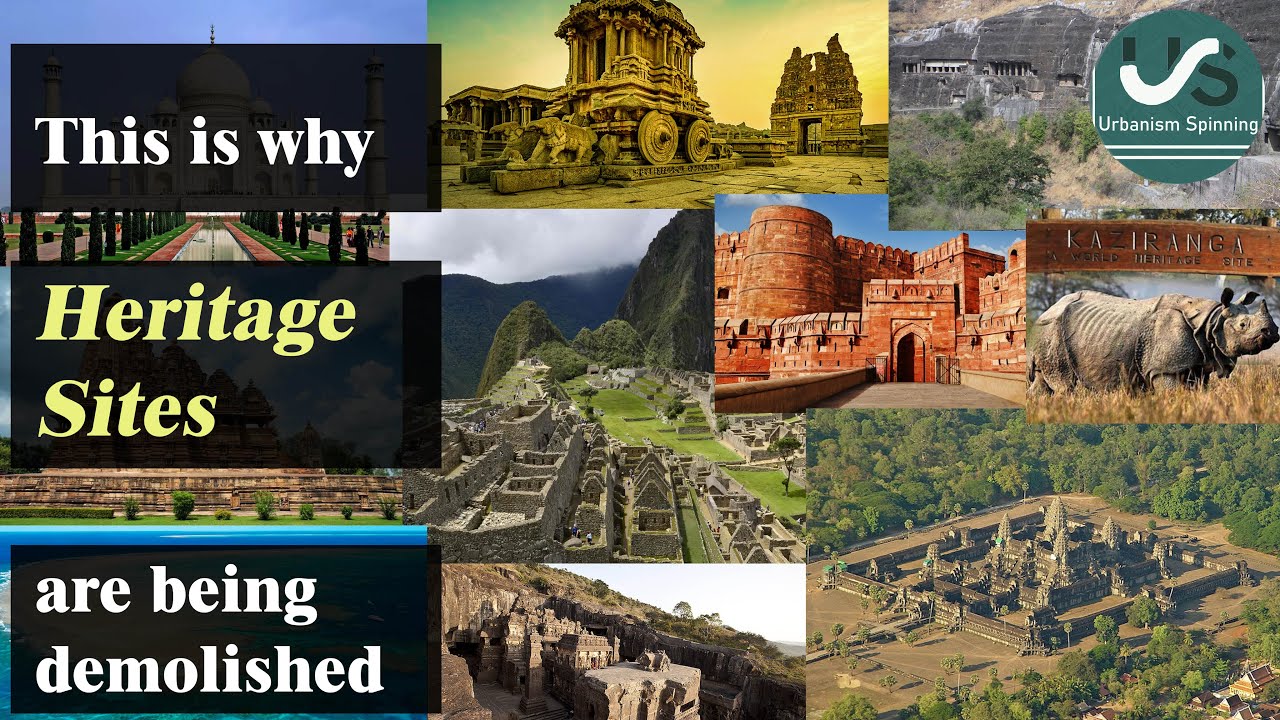Heritage Conservation - Preserving Our Past For The Future
Heritage conservation means keeping and taking care of buildings, objects, landscapes, and other cultural assets that are important because of their history, beauty, or culture. It is the process of safeguarding our past for the benefit of future generations.
Author:George EvansApr 09, 20234.2K Shares533.2K Views

Heritage conservationrefers to the preservation and protection of buildings, objects, landscapes, and other cultural assets that have historic, aesthetic, or cultural significance. It is the process of safeguarding our past for the benefit of future generations.
Heritage conservation is a multidisciplinary field that involves architecture, urban planning, archaeology, history, and cultural studies.
It requires the collaboration of professionals from different fields to ensure the preservation of heritage assets in a responsible and sustainable manner.
The Importance Of Heritage Conservation
Heritage conservation is important for several reasons. First, it helps to preserve our cultural identity and history.
Heritage assets are a physical reminder of our past and provide a connection to our roots. They help us understand where we came from and how we have evolved as a society.
Second, heritage conservation is essential for the tourism industry. Many heritage assets attract visitors from around the world, generating revenue for the local economy.
By preserving these assets, we are not only protecting our history, but also supporting economic development.
Finally, heritage conservation has environmental benefits. By reusing historic buildings and materials, we are reducing waste and conserving resources. This approach promotes sustainability and contributes to the fight against climate change.

Heritage Conservation - Need and Importance with some conservation examples
Challenges Of Heritage Conservation
Heritage conservation faces several challenges. The first challenge is funding. The cost of maintaining and restoring heritage assets can be high, and many local governments struggle to find the resources to finance these projects.
Another challenge is balancing the need for preservation with the need for development. In many cases, heritage assets are located in areas where there is pressure for urban development. This can lead to conflicts between developers and heritage conservationists.
Finally, heritage conservation requires expertise and knowledge. This can be difficult to find in some areas, particularly in developing countries where there may be a lack of qualified professionals.
Strategies For Heritage Conservation
There are several strategies for heritage conservation. The first is to raise public awareness about the importance of heritage assets.
By educating the public about the value of our cultural heritage, we can generate support for heritage conservation initiatives.
Another strategy is to develop policies and regulations that support heritage conservation.
This can include zoning regulations that protect heritage assets from development, tax incentives for heritage conservation projects, and regulations that require developers to consider the impact of their projects on heritage assets.
Finally, collaboration is key to successful heritage conservation. This involves working with stakeholders from different fields, including architects, historians, urban planners, and community groups.
By bringing together different perspectives and expertise, we can develop comprehensive strategies that balance the need for preservation with the need for development.
Heritage Conservation Laws And Regulations
To ensure the effective conservation of heritage, laws and regulations have been established at the national, state, and local levels. These laws and regulations are aimed at protecting heritage sites, buildings, and objects from damage, destruction, or loss.
National Heritage Conservation Laws And Regulations
At the national level, countries have established various laws and regulations to protect their heritage.
For example, in the United States, the National Historic Preservation Act of 1966 (NHPA) created the National Register of Historic Places, which is a list of significant historic sites, buildings, and structures in the country.
The act also established the Advisory Council on Historic Preservation to provide guidance on historic preservation to federal agencies.
Similarly, in the United Kingdom, the National Heritage Act of 1980 established the system of listing buildings and scheduled ancient monuments.
State And Local Heritage Conservation Laws And Regulations
States and local governments also have laws and regulations that protect heritage sites and objects within their jurisdictions.
For example, in Australia, each state and territory has its own heritage protection legislation, which lists significant places and objects within that region.
Additionally, many cities and towns have historic district regulations that protect buildings and sites in certain areas.
Benefits Of Heritage Conservation Laws And Regulations
The establishment of heritage conservation laws and regulations provides several benefits.
- It helps to protect cultural heritage sites and objects, which are valuable assets to a community's cultural identity.
- It can stimulate tourism and generate revenue for the local economy.
- It encourages the preservation of historic buildings and structures, which may have ecological and environmental benefits, such as reduced energy consumption and waste.
People Also Ask
What Is Heritage Conservation?
Heritage conservation refers to the process of preserving and protecting buildings, structures, landscapes, and other objects that have cultural, historical, or architectural significance.
This can include restoring or rehabilitating historic structures, as well as maintaining and managing natural and cultural heritage sites.
Why Is Heritage Conservation Important?
Heritage conservation is important for several reasons. First, it helps to preserve our cultural heritage and identity, providing a tangible link to the past and a sense of continuity for future generations.
Second, it can provide economic benefits through tourism and the revitalization of historic areas. It can contribute to sustainable development by promoting the reuse of existing buildings and reducing the environmental impact of new construction.
What Are Some Techniques Used In Heritage Conservation?
Techniques used in heritage conservation can include physical repairs and restoration of buildings and objects, as well as the creation of management plans to ensure the long-term preservation of heritage sites.
These plans may include measures such as monitoring, maintenance, and visitor management to ensure that the site remains accessible and safe for future generations.
Who Is Involved In Heritage Conservation?
Heritage conservation is often a collaborative effort involving a range of stakeholders, including government agencies, non-profit organizations, community groups, and individuals.
This can include historians, architects, planners, and other professionals who specialize in the preservation and management of heritage sites.
What Challenges Exist In Heritage Conservation?
Heritage conservation can face several challenges, including funding constraints, lack of public awareness or support, and conflicting interests among stakeholders.
In addition, there may be technical challenges involved in preserving historic structures and landscapes, such as the use of appropriate materials and techniques that maintain the integrity of the original design while ensuring safety and accessibility for visitors.
Final Thought
Heritage conservation is a critical component of cultural and environmental sustainability. By preserving our past, we are protecting our cultural identity, promoting economic development, and contributing to the fight against climate change.
However, heritage conservation faces several challenges, including funding, balancing preservation with development, and a lack of expertise in some areas.
By raising public awareness, developing supportive policies, and collaborating across disciplines, we can ensure the preservation of our cultural heritage for future generations.

George Evans
Author
George Anderson, an exceptional architectural designer, envisions and brings to life structures that transcend the realm of imagination. With an unwavering passion for design and an innate eye for detail, George seamlessly blends form and function, creating immersive spaces that inspire awe.
Driven by a deep appreciation for the interplay of space, light, and materials, George's innovative approach redefines the possibilities of architectural design. His visionary compositions leave an indelible mark, evoking a sense of wonder and transforming the built environment.
George Anderson's transformative designs and unwavering dedication continue to shape the architectural landscape, pushing the boundaries of what is possible and inspiring generations to come.
Latest Articles
Popular Articles